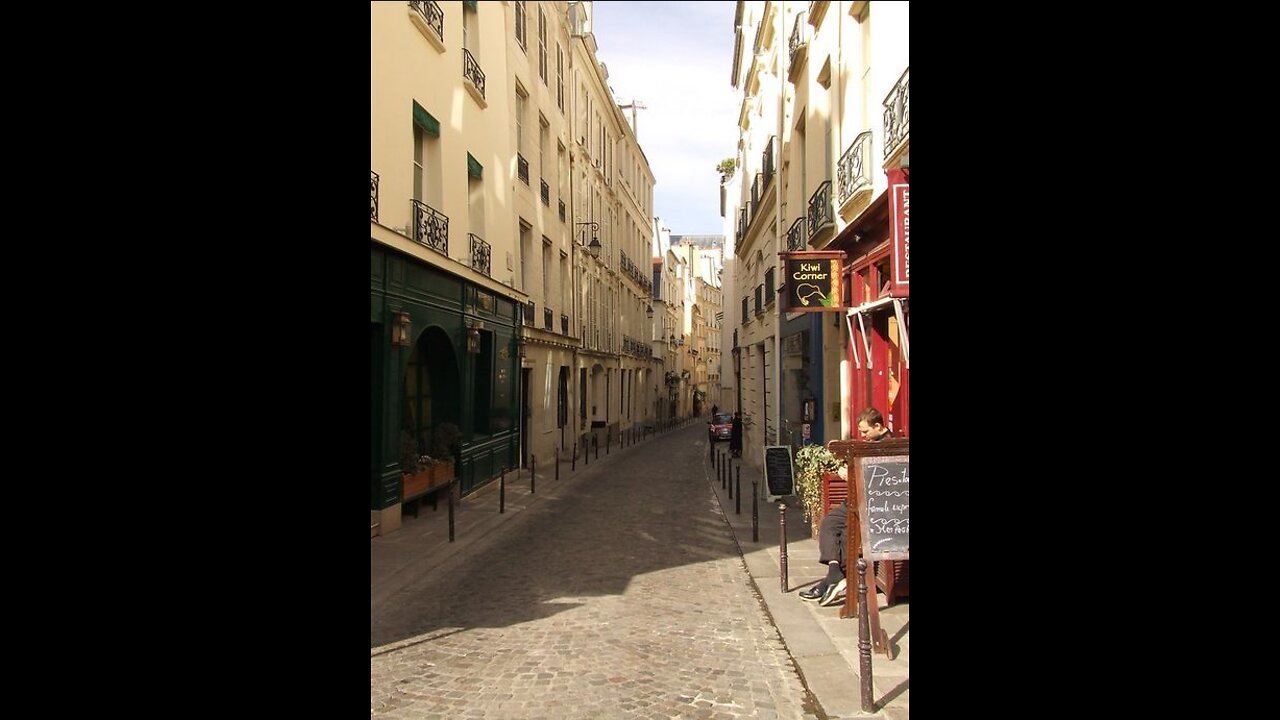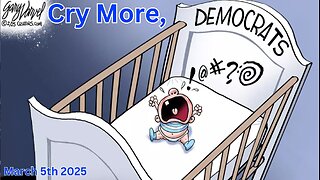Premium Only Content

"The Street of the First Shell" by Robert W. Chambers
This is just all the chapters put together into one upload. If you've been following along the whole time, there is nothing new to hear here.
----
"Be of Good Cheer, the Sullen Month will die,
And a young Moon requite us by and by:
Look how the Old one, meagre, bent, and wan
With age and Fast, is fainting from the sky."
-Another quatrain from "The Rubaiyat of Omar Khayyam", translated by Edward FitzGerald.
----
0:00:00 Chapter 1
0:15:52 Chapter 2
0:45:20 Chapter 3
1:06:20 Chapter 4
----
You can support me on Patreon! https://www.patreon.com/sststr
This story is set in a Paris besieged by the Prussians during the Franco-Prussian war of 1870. Us 21st century readers don't often encounter fiction set during this particular war!
Sabots = wooden shoes worn by French peasants.
"Buttons" = boy-in-buttons, i.e. a page or valet.
Braith was a principal character in another of Chamber's works: In the Quarter (1894).
Fallowby appears to be a completely made up name. I wasn't quite sure how to pronounce the -by part of the name, a case could be made for either a long 'i' or a long 'e' sound. I have no idea! Because like every other author ever, he leaves behind no hints as to pronunciations for made up names. *sigh* Since 'by' is an actual English word, as is 'fallow', I just went with the compounding of the two words and used the long 'i', even though my gut is to go with the long 'e'. Authors: help avoid this confusion with some sort of footnotes or appendix or glossary of name pronunciations!!
You'll have to pardon I am a terrible singer even in my native English, so of course me trying to sing in French is going to be a disaster. Good thing it was just a couple of words...
The Army of the Loire was basically all of what was left of the French army after the Battle of Sedan.
Mobile was a highly mobile corp of the National Guard.
Franc-tireur, in the context of the Franco-Prussia war, were irregular soldiers deployed in the early months of the war. They were non-uniformed light infantry who supplied their own arms, but were placed under command of the regular army and frequently engaged in guerilla-like tactics. They were executed by the Prussians when captured, and reprisals were made against local villages where they operated. The hazards of being non-uniformed troops! And the brutality of the Germans that we would see again in both world wars.
"Dead wall" is a curious phrase I have never heard before, but maybe that is my own limited experience. Apparently it is a blank wall unbroken by windows or other openings.
Chapter 3 feels to me like quite an accurate description of a 19th century battle field, and it's very depressing. Certainly nothing like a Hollywood movie...
The pictures used are:
Chapter 1: "One of Many Small Streets in Latin Quarter, Paris" by Piotr Rybałtowski, used here under the Creative Commons Attribution-NonCommercial-NoDerivs 2.0 Generic license (https://creativecommons.org/licenses/by-nc-nd/2.0/). Used just to give you a feel for the setting. I thought of using some dramatic picture of the 1870 Siege of Paris, but not yet, maybe for a subsequent chapter.
Chapter 2: "un obus sur le boulevard Saint-Michel" by loki11, from l'illustration Européenne : /1870 / no16 p.125.
Chapter 3: "sortie du général Ducrot de Paris" from l'illustration Européenne : /1870 / no8- p.57
Chapter 4: "les horreurs du siège" from l'illustration Européenne : /1870 / no16- p.121
To follow along: https://gutenberg.org/files/8492/8492-h/8492-h.htm#THE_STREET_OF_THE_FIRST_SHELL
-
 50:13
50:13
BonginoReport
4 hours agoState of the Union Breakdown: Democrats' Disastrous Decorum (Ep.153) - 03/05/2025
77.1K191 -
 LIVE
LIVE
Wendy Bell Radio
6 hours agoCry More, Democrats
13,455 watching -
 1:21:20
1:21:20
Dear America
11 hours agoTrump DOESN'T HOLD BACK In Speech To Congress FULL RECAP!
40.9K10 -
 36:09
36:09
Dad Dojo Podcast
2 hours agoEP22: Don't Talk To My Kid!!!
4.21K -
 1:38:34
1:38:34
Jeff Ahern
2 hours ago $2.37 earnedNever Woke Wednesday with Jeff Ahern (big time speech)
24.4K2 -
 39:10
39:10
Producer Michael
20 hours agoINSIDE AN INSANE MIAMI SUPERCAR COLLECTION!
42.8K3 -
![Dems Proved They Hate America & Angry They Can’t Lord Over All Americans [EP 4461-8AM]](https://1a-1791.com/video/fwe2/9c/s8/1/0/2/G/p/02Gpy.0kob-small-Dems-Proved-They-Hate-Ameri.jpg) 3:25:08
3:25:08
The Pete Santilli Show
12 hours agoDems Proved They Hate America & Angry They Can’t Lord Over All Americans [EP 4461-8AM]
41.8K9 -
 12:32
12:32
Melonie Mac
22 hours agoAmouranth 2A's Intruder
47.7K33 -
 16:39
16:39
Scammer Payback
17 hours agoNo Mercy for this Scammer
43.2K14 -
 31:19
31:19
Uncommon Sense In Current Times
18 hours ago $4.52 earned"The Truth About Government Waste: How USAID is Failing & What Christians Must Do w/ Cheryl Chumley"
37.7K6